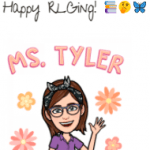Hello Everyone,
In one of my graduate classes this semester, I was asked to find the answers to two research questions using Internet sources and a database. Below are the questions, my answers, and discusses of my searching processes.
Research Question #1
Question: About how long was the Oregon Trail, and where did it begin and end?
Answer: The Oregon Trail was approximately 2,000 miles in length. It officially began in Independence, Missouri, and ended in Oregon City, Oregon.
Process:
On KidsClick, a student-friendly search engine, I searched for “orgeon trail” using the advanced search feature and found zero results, due to the intentional misspelling. I repeated the search, spelled correctly this time, choosing to search specifically by subject and found one result discussing the food eaten on the trail.
Highly unsatisfied with the results of this search engine, I used Google to find additional search engines geared towards children. From that search, I chose to use SafeSearchKids.com. In the search box, I included Boolean logic in my query, that is “Oregon trail AND length AND beginning OR ending,” since the engine did not have an advanced search option. Incidentally, this engine used KidzSearch.com to gather and present results. Among the different websites on the first page, I found a page called “Basic Facts about the Oregon Trail” that had blm.gov as its URL. I clicked on this link and found the following information.
The U.S. Department of the Interior’s Bureau of Land Management: National Historic Oregon Trail Interpretive Center states that the Oregon Trail was “approximately 2,000 miles west from Missouri toward the Rocky Mountains to the Willamette Valley” (U.S. Department of the Interior, n.d.a, para. 1). Looking at a map found by searching “Oregon trail” on this website, I learned that the trail started in Independence, Missouri and ended in Oregon City, Oregon (U.S. Department of the Interior, n.d.b).
When I used Google to repeat this information seeking process, I first searched simply “Oregon trail” and found information in the 1970s computer game. When I used advanced search features, by looking for results written in English with all of the words “Oregon trail length beginning end,” I found several websites on first page, including a Frequently Asked Questions on an interactive webquest for students, “Journey Along the Oregon Trail.” There, I again found that the trail was “about 2,000 miles” long and officially “began in Independence, Missouri (a “jumping off point”) and ended in Oregon City, Oregon” (“Frequently Asked Questions,” n.d., para. 4, 6).
References
“Frequently Asked Questions About the Oregon Trail.” (n.d.). Retrieved from http://my.ilstu.edu/~jabraun/students/kertz/page6.htm
U.S. Department of the Interior, Bureau of Land Management (n.d.a). Basic facts about the Oregon trail. Retrieved from http://www.blm.gov/or/oregontrail/history-basics.php
U.S Department of the Interior, Bureau of Land Management. (n.d.b). [Map showing the Oregon Trail in relation to the Whitman Trail, Applegate Trail, Lewis & Clark, and the Santa Fe Trail]. Retrieved from http://www.blm.gov/or/oregontrail/files/OregonTrailMap5a.pdf
Research Question #2
Question: How are ideas of students with bodily-kinesthetic intelligence best expressed?
Answer: Howard Gardner, in his theory of multiple intelligences, suggests that individuals are smart in at least eight different ways to varying degrees, one of which is bodily-kinesthetic intelligence. For a teacher, especially of young children, it is important to determine “learners’ intelligence profile and learning styles” so he or she can cater to “every child in the classroom,” which will “contribute to the learning process and make it more pleasurable” (Ekşı, 2009, p. 54).
Bodily-kinesthetic intelligence can be defined as “the capacity to manipulate objects and use a variety of physical skills” and is characteristic of “athletes, dancers, surgeons, and crafts people” (Shepard, 2004, p. 214). Students with this type of intelligence “learn by doing” (Ekşı, p. 54).
With this knowledge of students’ learning and activity preferences, a teacher can design ways through which students with bodily-kinesthetic intelligence can express their ideas. For example, these students would appreciate the opportunity to show their understanding of a concept through drama, such as performing a play of a historical event or piece of literature, or movement, such as using their arms to represent the three types of angles or using their bodies to be molecules inside water as a liquid, solid, or gas.
Process:
I had great difficulty using KYVL, as I discussed in my evaluation of the database in LME 506 Discussion Board 1. After speaking with someone from my public library, I was finally able to conduct searches by connecting directly to specific databases, rather than using the “search KYVL for” box. When trying to use the search box, I was asked to log in, yet every set of usernames and passwords I tired, that is WKU and LFPL, were considered invalid.
Using Academic Search Complete as my entry point into KYVL, I used that database and Teacher Reference Center to search for full-text, peer-reviewed articles. I tried searching “bodily-kinesthetic intelligence AND ideas expression” and “bodily-kinesthetic intelligence AND ideas expressed” without success. With just the keywords “bodily-kinesthetic intelligence.” I found fourteen articles that matched my criteria, two of which I used to answer this research question.
Once I was able to choose the databases which I wished to search, KYVL functioned comparably to the WKU Library databases and other college database collections.
After refreshing my memory of the definition of bodily-kinesthetic intelligence with Shepard’s article, I read the explanation by Ekşı of an implemented English language arts lesson with kindergarten students that incorporated all eight intelligences into the activities. Using the information from those two articles, I was able to synthesize the answer to this research question, drawing from lessons I have implemented with second and fourth graders on molecules and angles, respectively.
References
Ekşı, G. (2009). Multiple short story activities for very young learners with multiple tastes. Ekev Academic Review, 13(40), 51-68.
Shepard, J. S. (2004). Multiple ways of knowing: Fostering resiliency through providing opportunities for participating in learning. Reclaiming Children & Youth, 12(4), 210-216.
Enthusiastically,
Ms. Tyler


